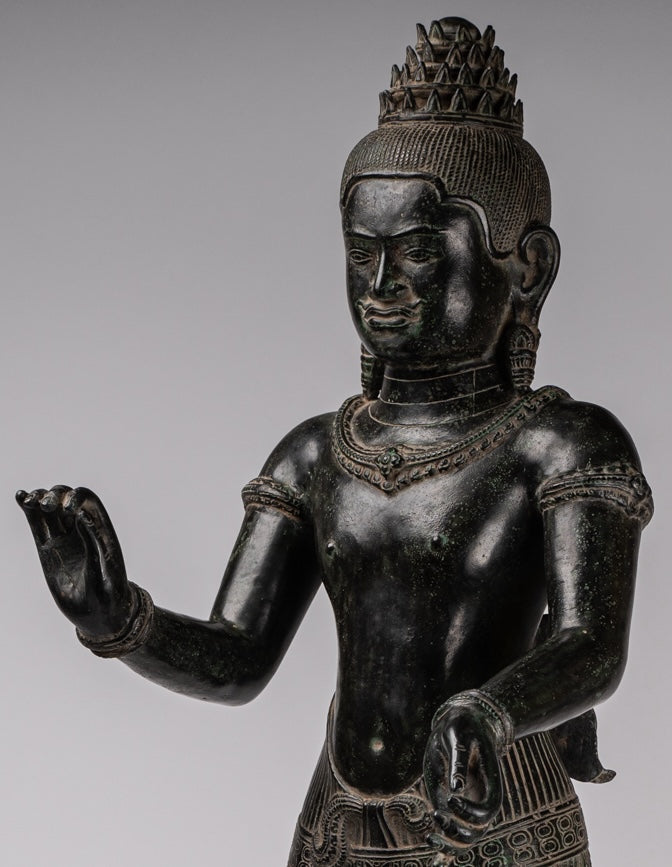
Vishnu Statue: Symbolism of Preservation, Harmony, and Cosmic Order
Introduction
In the rich tapestry of Hindu mythology, Lord Vishnu emerges as a symbol of profound cosmic principles and spiritual significance. As the Preserver in the Holy Trinity (Trimurti), Vishnu's symbolism extends beyond religious rituals to encompass universal truths and eternal cosmic order.
In this blog post, we will explore the multifaceted symbolism of Lord Vishnu, delving into the spiritual, mythological, and cosmic dimensions that make him a revered and timeless deity.
-
Preserver of the Universe: At the heart of Vishnu's symbolism is his role as the Preserver. While Brahma is the Creator and Shiva the Destroyer, Vishnu's duty is to maintain cosmic order and balance. His divine intervention occurs whenever the equilibrium of the universe is threatened, ensuring the preservation of righteousness and dharma.
-
Four Arms and Divine Attributes: The iconic depiction of Vishnu with four arms holds profound symbolic significance. Each hand carries a divine attribute — the conch shell (shankha), symbolizing the creation of cosmic sound; the discus (chakra), representing the eternal cycle of time and cosmic order; the mace (gada), signifying mental and physical strength; and the lotus flower (padma), symbolizing purity and transcendence.
-
Lakshmi - The Consort: Vishnu's union with the goddess Lakshmi emphasizes the harmonious balance between the spiritual and material aspects of life. Lakshmi, the goddess of wealth and prosperity, symbolizes the abundance that flows when there is equilibrium and righteousness in one's actions.
-
Avatars - Incarnations: Vishnu is renowned for descending to Earth in various avatars or incarnations to restore cosmic balance. The ten principal avatars, including Rama and Krishna, embody divine principles and serve as cosmic influencers, guiding humanity on the path of righteousness.
-
Reclining on Ananta Shesha: The image of Vishnu reclining on the cosmic serpent, Ananta Shesha, symbolizes the divine rest during cosmic dissolution. Ananta Shesha's thousand hoods provide shelter to the god, representing the cosmic ocean and the divine sustenance of the universe during the cycles of creation and dissolution.
-
Cosmic Harmony and Dharma: Vishnu's symbolism transcends personal worship to embody cosmic harmony and the preservation of dharma. His divine attributes, cosmic interventions, and avatars collectively guide humanity towards righteous living, emphasizing the eternal order that governs the universe.
-
The Lotus-Naveled One - Padmanabha: Vishnu's epithet as Padmanabha, meaning "Lotus-Naveled," symbolizes the cosmic center from which creative energy emanates. According to mythology, Brahma emerged from Vishnu's navel seated on a lotus flower, emphasizing the creative force originating from the cosmic core.
Conclusion
Lord Vishnu, with his multifaceted symbolism, serves as a beacon of cosmic principles and spiritual truths. As the Preserver of the Universe, he stands as a timeless reminder of the importance of cosmic harmony, the preservation of righteousness, and the eternal order that governs the cosmos.
In understanding the symbolism of Vishnu, one discovers not only a deity to be worshipped but a guide for leading a life in harmony with the divine and cosmic order.


